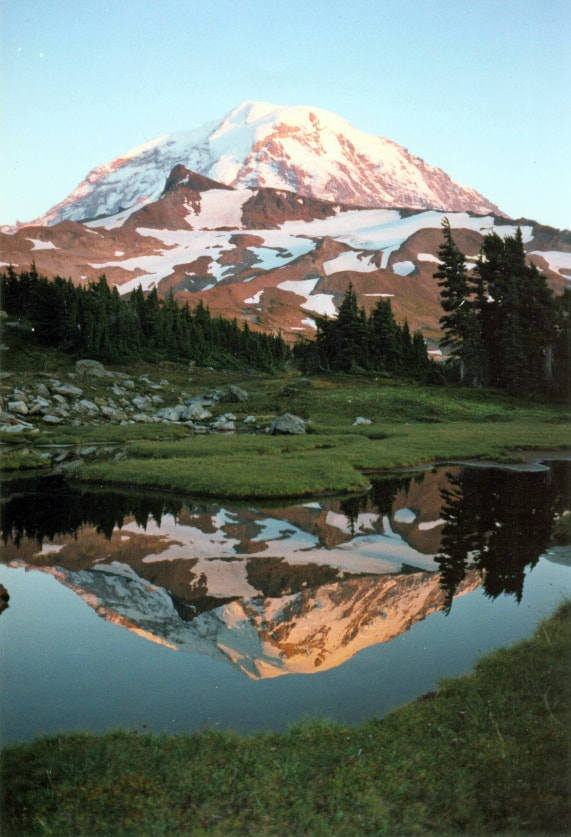Berkeley Rockshelter Site:
Understanding the Late Holocene use of the
Mount Rainier Area
Understanding the Late Holocene use of the
Mount Rainier Area
By Dr. Bradford W. Andrews
Pacific Lutheran University
and
Greg Burtchard
Retired Mt. Rainier National Park Archaeologist
Pacific Lutheran University
and
Greg Burtchard
Retired Mt. Rainier National Park Archaeologist
Expanding on the recent Journal of Northwest Anthropology JONA 2016 article Berkeley Rockshelter Lithics, Understanding the Late Holocene Use of the Mount Rainier Area, this illustrated presentation will address two topics:
Working with forager-collector principles first developed by Lewis Binford (1980), and modified by Randall Schalk and Greg Cleveland (1983) to model temporal change in the Pacific Northwest, Burtchard considers the mountain’s basic environmental characteristics and its capacity to attract and sustain pre-contact hunters and gatherers.
As part of recent research in the Park, data recovered during test excavations at Berkeley Rockshelter, occupied from about 2,500 B.P. to contact, have been analyzed by Bradford Andrews, Associate Professor of Anthropology at Pacific Lutheran University and some of his students. Debitage and projectile points found at the rockshelter support the inference that late-stage flaking, for shaping and reworking projectile points and preforms, was a prominent activity at the site.
Andrews will summarize the results of this analysis, which supports the interpretation that it functioned primarily as a limited-task field or hunting camp, consistent with the late Holocene use of Mount Rainier as proposed in Burtchard’s model.
- What is currently known about the prehistoric use of Mount Rainier area, and
- What is the nature of activities that took place at the late Holocene Berkeley Rockshelter site situated at 5,600 feet on the northern flank of the mountain.
Working with forager-collector principles first developed by Lewis Binford (1980), and modified by Randall Schalk and Greg Cleveland (1983) to model temporal change in the Pacific Northwest, Burtchard considers the mountain’s basic environmental characteristics and its capacity to attract and sustain pre-contact hunters and gatherers.
As part of recent research in the Park, data recovered during test excavations at Berkeley Rockshelter, occupied from about 2,500 B.P. to contact, have been analyzed by Bradford Andrews, Associate Professor of Anthropology at Pacific Lutheran University and some of his students. Debitage and projectile points found at the rockshelter support the inference that late-stage flaking, for shaping and reworking projectile points and preforms, was a prominent activity at the site.
Andrews will summarize the results of this analysis, which supports the interpretation that it functioned primarily as a limited-task field or hunting camp, consistent with the late Holocene use of Mount Rainier as proposed in Burtchard’s model.
DATE: Friday, December 1st, 2017
TIME: 7 pm to 9 pm
PLACE: Mountaineers Seattle Program Center, 7700 Sand Point Way NE, Seattle, WA 98115 in the Cascade Room
COST: FREE to members, $10.00 to Non-members, $5.00 for Students, Seniors and Mountaineers members (please renew membership for 2018 and these programs at http://pnwas.org and now through PayPal)
Refreshments provided (Please bring cookies/snacks to share with the beverages).
TIME: 7 pm to 9 pm
PLACE: Mountaineers Seattle Program Center, 7700 Sand Point Way NE, Seattle, WA 98115 in the Cascade Room
COST: FREE to members, $10.00 to Non-members, $5.00 for Students, Seniors and Mountaineers members (please renew membership for 2018 and these programs at http://pnwas.org and now through PayPal)
Refreshments provided (Please bring cookies/snacks to share with the beverages).

 RSS Feed
RSS Feed
